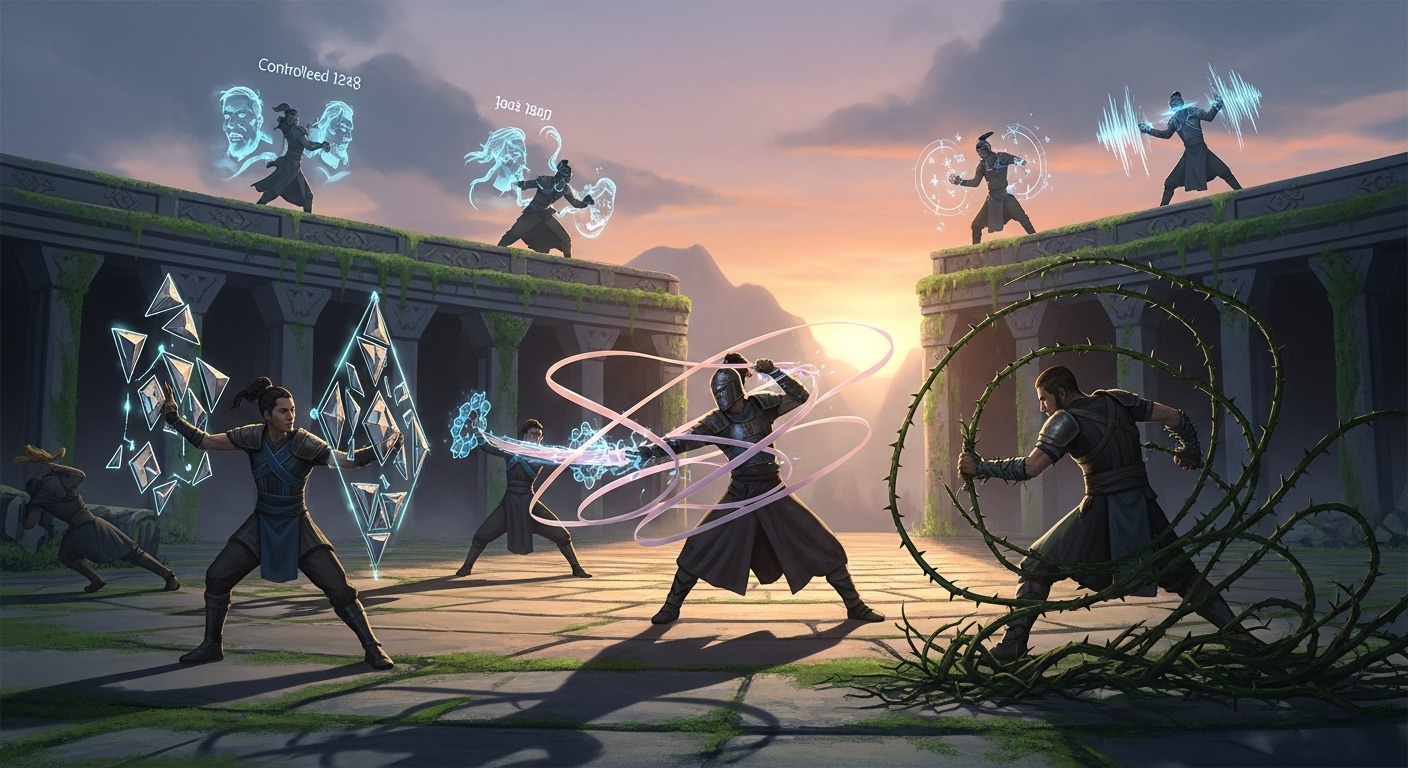Introduction
Video games are defined by their interactivity, and combat has long been one of the most prominent mechanics in the medium. From early arcade titles to sprawling modern blockbusters, combat systems shape how players engage with challenges, enemies, and the world around them. For decades, developers have refined combat to provide excitement, tension, and reward. Yet some titles have dared to break the mold, experimenting with mechanics that redefine what combat can be.
Unique combat systems often push the boundaries of design by blending genres, emphasizing creativity over repetition, or adding narrative weight to every strike. These games capture players’ attention because they offer more than button-mashing or formulaic encounters. Instead, they demand thought, strategy, and emotional investment. This blog will explore some of the best games with unique combat systems, analyzing what makes them stand out and how they influence the broader gaming landscape.
Why Unique Combat Systems Matter
While many games rely on familiar mechanics, unique combat systems distinguish themselves by offering innovation. They often do one or more of the following:
Redefine Player Interaction
Instead of limiting combat to physical attacks, these systems may introduce rhythm-based mechanics, conversation-driven battles, or even puzzles that redefine what fighting means.
Encourage Strategy Over Reflexes
Rather than focusing solely on speed and reaction, unique systems encourage players to think about positioning, timing, and resource management.
Tie Combat to Narrative
Some of the most memorable systems integrate combat directly with story themes, making fights emotionally impactful instead of purely mechanical.
Promote Player Creativity
Unique combat systems often allow players to experiment with tools, abilities, and styles, resulting in encounters that feel fresh even after many hours.
By innovating in these ways, games with unique combat systems leave lasting impressions, often influencing future titles in the process.
Undertale
Undertale redefined what combat could mean in a role-playing game. Instead of simply attacking enemies until their health dropped, players could choose to spare them. Each battle offered opportunities to interact, compliment, joke, or resolve conflicts through nonviolent means.
The system’s brilliance lay in how it blended gameplay with narrative. Every choice influenced the story, with pacifist runs leading to radically different outcomes than aggressive playstyles. Combat became a moral test rather than just a mechanical challenge, creating one of the most memorable systems in gaming.
Shadow of Mordor
Middle-earth: Shadow of Mordor introduced the Nemesis System, a groundbreaking innovation in combat and storytelling. Enemies who defeated the player would rise through the ranks, gaining strength, personality, and unique traits. This mechanic gave combat lasting consequences, as each encounter shaped the evolving hierarchy of foes.
Instead of faceless enemies, players faced rivals with grudges, taunts, and evolving personalities. Combat was no longer just about survival; it was about rivalry, revenge, and personal storytelling. The system’s uniqueness earned critical acclaim, and while few games have replicated it, it remains one of the most innovative designs in modern gaming.
Batman: Arkham Series
The Arkham series revolutionized melee combat with its free-flow system. Instead of rigid combos or static animations, players could fluidly move between enemies, chaining attacks, counters, and gadgets with rhythm-like precision.
The system was intuitive yet deep, rewarding timing, awareness, and improvisation. It transformed Batman into the fearsome, agile fighter fans imagined while still challenging players to master the rhythm of combat. Its influence spread widely, with many modern action games adopting similar mechanics.
Dark Souls Series
Dark Souls earned its reputation not just for difficulty but for its deliberate combat system. Unlike games that encourage frantic button-pressing, Dark Souls demanded patience, observation, and precision. Every swing of a weapon carried weight, every dodge required timing, and every decision mattered.
The uniqueness of this system lay in its unforgiving fairness. Players could not rely on luck or button-spamming; instead, they had to learn enemy patterns, manage stamina, and embrace failure as part of mastery. This deliberate design reshaped the action RPG genre, inspiring countless imitators known as “soulslike” games.
Nier: Automata
Nier: Automata blended hack-and-slash action with bullet-hell shooting, creating one of the most unique hybrid combat systems in gaming. Players seamlessly transitioned from slashing enemies with fluid combos to dodging waves of projectiles in twin-stick shooter sequences.
The system’s variety kept combat engaging, but its real genius was how it tied into the narrative. Battles reflected the game’s themes of humanity, identity, and sacrifice, turning every encounter into a philosophical as well as mechanical experience.
Devil May Cry Series
The Devil May Cry series pioneered the concept of “stylish combat.” Instead of simply rewarding efficiency, the game encouraged creativity, ranking players based on how varied and flashy their combos were.
This system pushed players to experiment with weapons, abilities, and strategies, transforming combat into a form of performance. The thrill of pulling off intricate, stylish sequences made fighting feel as much like art as it did challenge.
Hollow Knight
Hollow Knight combined precision platforming with responsive, deliberate melee combat. What made its system unique was the integration of exploration, resource management, and risk-reward mechanics.
Players restored health by striking enemies, forcing them to balance aggression with caution. Each fight demanded mastery of movement, timing, and adaptability. Combined with its atmospheric storytelling, combat in Hollow Knight felt deeply intertwined with the world’s tone and themes.
Sekiro: Shadows Die Twice
From the creators of Dark Souls, Sekiro shifted away from stamina management to focus on posture and deflection. Players could not simply block or dodge indefinitely; they had to master the art of parrying, breaking opponents’ posture, and seizing the moment for a finishing blow.
This system rewarded precision and rhythm, demanding that players unlearn typical defensive habits and embrace aggression. The result was a combat system unlike any other, blending intensity, skill, and elegance into every duel.
Monster Hunter Series
Monster Hunter’s combat stands apart because of its weighty, deliberate design. Weapons feel heavy, attacks require commitment, and each monster encounter is a unique puzzle. Rather than frantic button-mashing, players must study patterns, exploit weaknesses, and coordinate with allies.
What makes it unique is the variety of weapons, each with its own complex mechanics. From the colossal greatsword to the nimble insect glaive, every weapon offers a distinct combat style, ensuring no two hunts feel the same.
Papers, Please
While not combat in the traditional sense, Papers, Please turned bureaucracy into a form of conflict. Players acted as border inspectors, deciding who could cross and who would be denied entry. Each decision felt like a battle between empathy and duty, survival and morality.
This unconventional system redefined combat as something internal and psychological, showing that tension and conflict do not always require swords or guns. Its unique design left players grappling with ethical dilemmas long after playing.
Katana Zero
Katana Zero combined fast-paced, one-hit-kill combat with time manipulation. Players sliced through enemies with cinematic precision, using slow-motion abilities to dodge bullets and plan attacks.
The uniqueness came from the game’s structure, where failed attempts were framed as “rehearsals.” Success only came when players executed the perfect sequence, making combat feel like choreography. This blend of precision, creativity, and narrative integration set Katana Zero apart.
The Witcher 3: Wild Hunt
The Witcher 3’s combat system was unique for its integration of preparation and choice. Players could not simply charge into battles; they needed to study monsters, craft potions, and select the right gear.
Combat blended swordplay with magical signs and alchemy, rewarding players who embraced versatility. The uniqueness lay in its narrative integration: every fight felt like part of Geralt’s role as a professional monster hunter, requiring thought and knowledge rather than brute force.
Bayonetta
Bayonetta took the stylish combat pioneered by Devil May Cry and added its own twists, most notably the Witch Time mechanic. Perfectly dodging an enemy’s attack slowed time, rewarding precision and encouraging players to take risks.
Its fluidity, creativity, and emphasis on spectacle made combat feel like a dance. The system’s uniqueness came from how it balanced accessibility with depth, allowing newcomers to enjoy while still challenging veterans to master complex combos.
Dead Cells
Dead Cells combined fast-paced combat with roguelike elements, creating encounters that were as unpredictable as they were exhilarating. Each run introduced new weapons, abilities, and strategies, forcing players to adapt on the fly.
The uniqueness of Dead Cells came from its blend of fluid melee combat, ranged options, and procedural generation. No two battles ever felt the same, and success relied on experimentation and improvisation.
Why Unique Combat Systems Are Important for the Industry
Unique combat systems play a vital role in advancing the gaming industry. They challenge conventions, inspire innovation, and broaden the possibilities of what games can be. By experimenting with mechanics, developers open new ways for players to engage with challenges and stories.
These systems also highlight the versatility of games as a medium. Combat does not always need to mean violence; it can be moral conflict, bureaucratic decision-making, or even rhythm and timing. Such diversity ensures that games remain fresh, engaging, and capable of surprising players.
The Legacy of Innovative Combat Systems
Many games with unique combat systems leave legacies that extend beyond their own success. The free-flow combat of Batman: Arkham influenced countless action games. Dark Souls’ deliberate combat birthed an entire subgenre of challenging titles. Undertale’s moral choices inspired other developers to rethink player interaction with enemies.
By daring to innovate, these games shape the future of design, proving that creativity in combat can be as impactful as storytelling or visuals.
Conclusion
The best games with unique combat systems stand out because they transform encounters into more than routine mechanics. They challenge expectations, demand thought, and often tie directly into the story and themes. From the deliberate precision of Dark Souls to the moral dilemmas of Undertale, these systems remind us that combat is not just about defeating enemies but about engaging players in meaningful, memorable ways.
As the industry continues to evolve, new innovations in combat will undoubtedly emerge, redefining how we experience games. What remains clear is that the most impactful systems will not just entertain but will resonate, surprise, and stay with us long after the battle is over.

